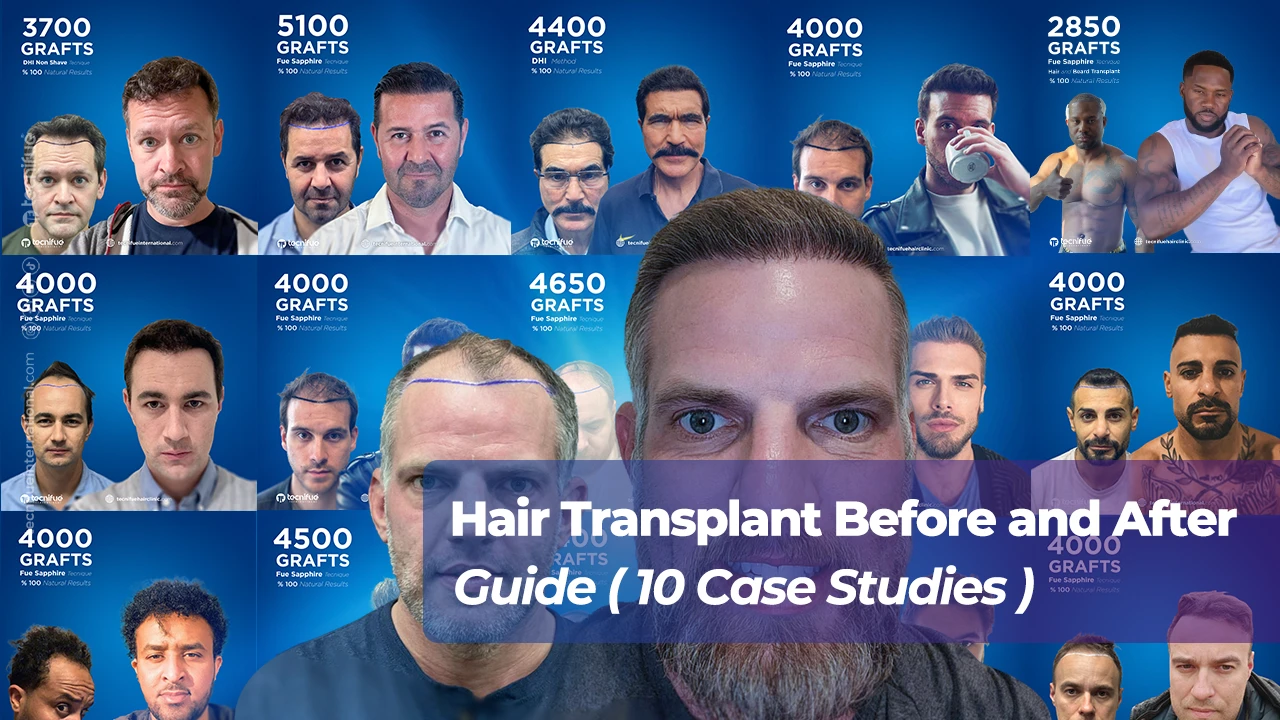The hair transplant before and after results are probably one of the most researched topics in hair restoration.
If you’re considering a hair transplant, the before and after photos of other patients who have had the procedure can be some of your best references.
It’s also fun and motivating to see that others struggling with the same issue have regained their hair.
I completely agree that it’s exciting to see what hair transplant results look like.
And that’s precisely what I’m here to share with you.
I’ll present 10 cases of patients who have had hair transplants at our clinic in Istanbul.
But it gets even better.
I’ll cover some lesser-known aspects of hair restoration results.
Here’s a sneak preview of what to expect.
You’ll learn what defines a good hair transplant result, and I’ll explain what constitutes a bad hair transplant with clear visual examples.
Finally, I’ll share expert tips for a natural hair transplant result.
Before we dive into the impressive before and after photos, let me quickly introduce myself.
I’m James, and I co-founded Tecnifue International Hair Clinic in 2012.
Over the last decade, we’ve become a well-known clinic for hair transplants in Istanbul.
My goal is to share my knowledge through blogs and other social media content.
The more you know about hair transplantation surgeries, the better your decisions will be.
That’s how I see it, and that’s what I’m here to help you achieve.
Now that you know me and my goal, let’s dive into our first case, shall we?
Case Studies: Hair Transplant Before and After
I want to share a quick note before we dive in.
It’s important to understand that each case we share below involves unique individuals.
The results we present are intended to give you an idea of what’s possible.
However, remember that your case is unique and will need careful analysis before you form any specific expectations.
I’ll discuss this in more detail in other sections of this blog.
Let’s take a look at the first Before and After results.
Hair Transplant Before and After Case 1

Background: Patient Stefan Goren
Stefan had suffered from hair loss for over ten years when he contacted us.
His hair loss had been progressing gradually, which can be pretty disheartening.
Stefan always had a high forehead and did not want to lower his hairline too much.
His main goal was to achieve a natural look.
In Stefan’s case, we dealt with a receding hairline and a thinning frontal zone.
We restored the front hairline and the frontal zone, ensuring that the hairline looked natural and fit perfectly with Stefan’s facial structure.
The result was a satisfying transformation that brought back not just his hair but also his confidence.
Hair Transplant Method: FUE Sapphire
Number of Grafts: 4,000 Grafts
As you can see, the FUE Sapphire method allowed us to carefully place each graft for the most natural look possible.
Stefan’s case highlights this method’s effectiveness, especially when tailored to individual needs and facial features.
Stay tuned for more detailed case studies and insights into what makes a successful hair transplant.
Each story is unique, and there’s much to learn from each journey.
Let’s move on to the next case!
Hair Transplant Before and After Case 2
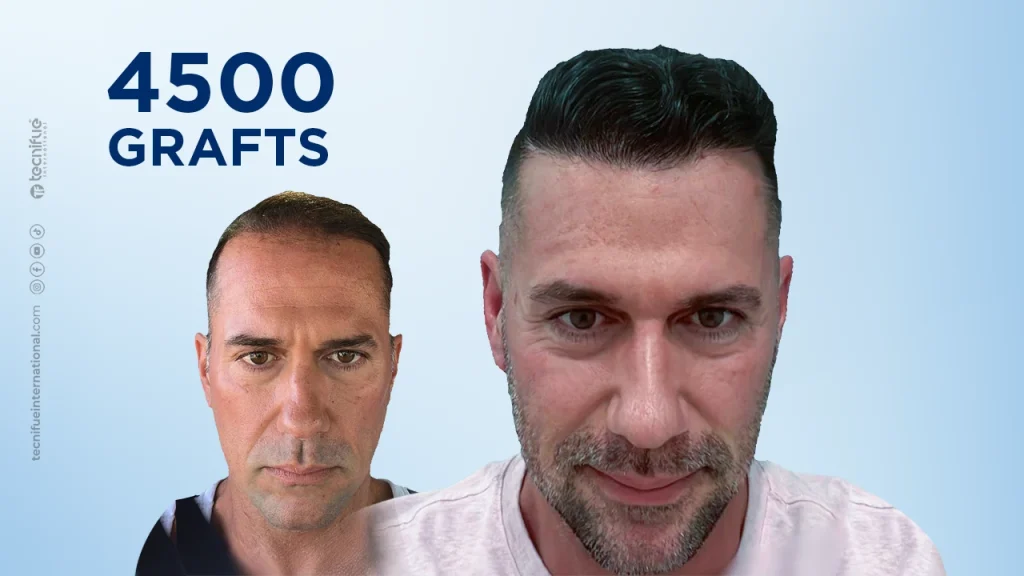
Background: Patient Nicolas van den Branden
Nicolas had suffered from hair loss for the last seven years when he contacted us.
He mentioned that his hair loss had been more intense in the last three years, but it had stabilized for the last year.
Nicolas had a receding hairline, thinning in the midsection and thinning at the crown.
The main problem area, however, was the front hairline.
We also noticed that Nicolas had weak hair.
His existing hair lacked volume and strength, which was something we focused on as part of the aftercare plan.
Nicolas wanted a natural hairline design, something that would blend seamlessly with his facial features.
We studied his hairline carefully and managed to design a hairline that matched his original one.
Nicolas is very happy with the results, and his hair restoration has made him look younger.
Through our growth products and supplement plans, we’ve also improved the quality of his existing hair, giving it more volume and strength.
Hair Transplant Method: FUE Sapphire
Number of Grafts: 4,500 Grafts
Using the FUE Sapphire method, we placed 4,500 grafts to achieve a natural and aesthetically pleasing hairline.
This method allowed us to ensure that each graft was placed precisely, resulting in a look that Nicolas was thrilled with.
Additionally, our aftercare plan has significantly improved the overall health of his hair, making it stronger and more voluminous.
Stay tuned for more detailed case studies and insights into the hair restoration journey.
Each case provides valuable lessons and inspiration for those considering a hair transplant.
Let’s move on to the next case!
Hair Transplant Before and After Case 3
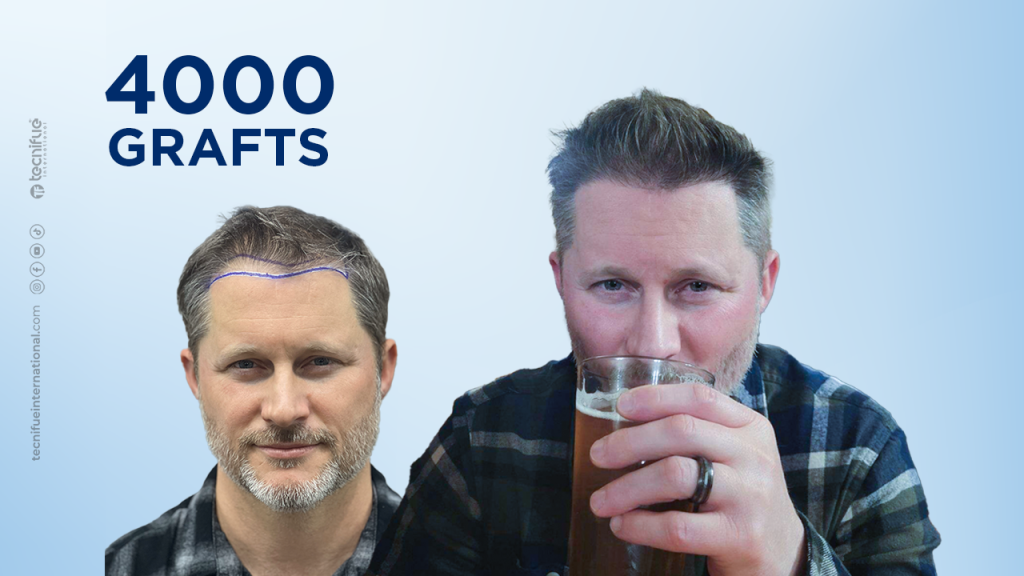
Background: Patient Josh Mackenzie
Josh reached out to us because he strongly desired to restore his front hairline.
His case was not about a receding hairline but rather a thinning one.
Unlike many others, Josh’s hair loss profile could be better described as a gradual hairline thinning.
Interestingly, a lot of people around Josh believed he didn’t need a hair transplant.
However, since hair transplant is also an aesthetic surgery, the need can be purely aesthetic as well.
Josh’s hairline had been thinning since his early twenties, progressing gradually.
We focused on densifying his front hairline and doing an overall touch-up across his scalp to create a fuller look.
This approach ensured that Josh’s hair looked naturally thick and healthy.
The outcome has been a very natural hairline with high density, which has significantly improved Josh’s appearance and confidence.
Hair Transplant Method: FUE Sapphire
Number of Grafts: 4,000 Grafts
Using the FUE Sapphire method, we meticulously placed 4,000 grafts to achieve a denser and more natural-looking hairline.
Josh’s case highlights that even those with less noticeable hair loss can benefit significantly from a hair transplant.
It’s not just about addressing severe hair loss but also about achieving the look you desire.
Let’s move on to the next case!
Hair Transplant Before and After Case 4

Background: Patient Darius
Darius had two main concerns when he reached out to us. First, he didn’t like the high forehead that he had always had.
Second, he was worried about his thinning hairline.
So, we had two aspects to address: the aesthetic concern of his high forehead and the practical issue of his thinning hairline.
Darius opted for a straight hairline for the hairline design, a style many Afro-men prefer.
We worked on lowering Darius’s hairline to address his high forehead while also densifying the thinning frontal zones to create a fuller look.
Hair Transplant Method: FUE Sapphire
Number of Grafts: 4,000 Grafts
Using the FUE Sapphire method, we successfully placed 4,000 grafts to achieve a natural and aesthetically pleasing hairline.
This method allowed us to carefully position each graft, ensuring that Darius’s new hairline was lower and denser.
The result is a natural look that suits Darius’s preferences and enhances his appearance.
Darius’s case demonstrates the versatility of hair transplants in addressing both aesthetic and practical concerns.
Whether reshaping a high forehead or thickening a thinning hairline, a well-planned hair transplant can make a significant difference.
Hair Transplant Before and After Case 5

Background: Patient James (Me)
Yes, I’ve had a hair transplant as well, right here at our clinic.
My hair loss started in my mid-twenties.
I was dealing with a gradual receding frontal zone and slight temple recession.
By the end of my twenties, the hair loss had become apparent, making it harder for me to style my hair how I liked it.
For my hair restoration, I studied my old hairline carefully over many years.
As an expert in hair restoration, I had a significant advantage in deciding on the most natural outcome.
Having assisted thousands of patients in designing their hairlines, I have developed a trained eye for what looks best and most natural.
We had a few trial drawing sessions with our medical team, after which I finally opted for a hairline that I deemed the best and most natural.
I decided not to restore my side temple areas, but I will share more about that in the sections below.
I am thrilled with the outcome and enjoy having my hair back daily.
Hair Transplant Method: DHI No Shave
Number of Grafts: 3,250 Grafts
Using the DHI No Shave method, we placed 3,250 grafts to achieve a natural and aesthetically pleasing hairline.
This technique allowed for the precise placement of each graft, ensuring a seamless blend with my existing hair.
The result has been a very natural look that I am thrilled with.
My personal experience underscores the importance of a well-planned hair transplant.
Hair Transplant Before And After Case 6
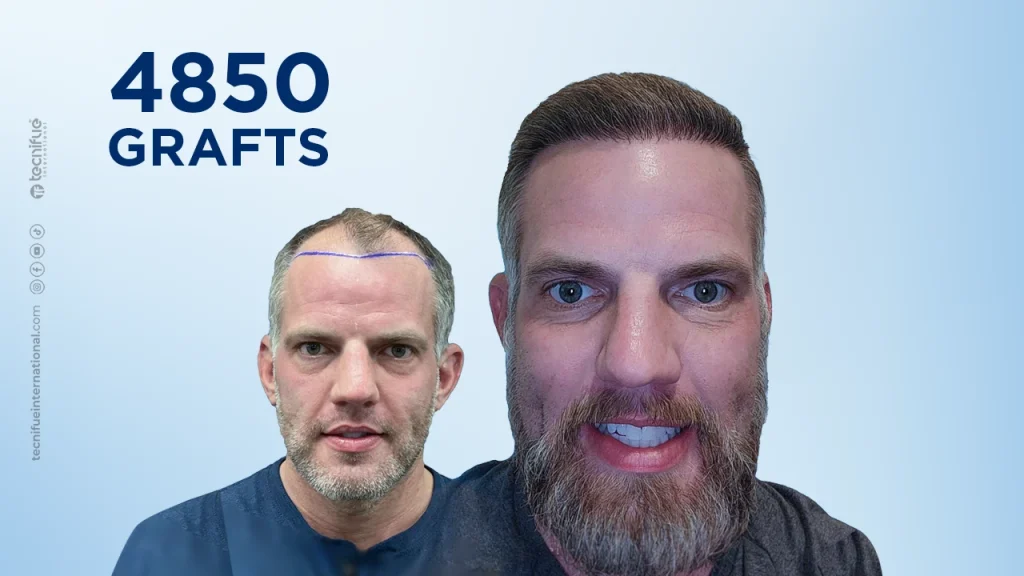
Background: Patient Curtis
Curtis had advanced recession in his frontal zones and temple regions.
His hair loss started in his thirties and progressed over several years.
When he came to us, the frontal zone required a complete restoration because we believed the few hairs remaining in the frontal region would probably not survive.
To avoid any future aesthetic problems, we decided to implant many grafts in areas with still some hair.
We sometimes do this to compensate for any future hair loss in those regions.
Given the large treatment zone, we opted to implant a high number of grafts to ensure comprehensive coverage.
Brad’s case is one of major transformation, as you can see from the results.
His new hairline looks natural and dense, significantly enhancing his overall appearance.
Hair Transplant Method: DHI
Number of Grafts: 4,850 Grafts
Using the DHI method, we placed 4,850 grafts to achieve a natural and aesthetically pleasing hairline.
Curtis’s transformation highlights the effectiveness of a well-planned hair transplant, especially in cases of advanced hair loss.
Let’s move on to the next case!
Hair Transplant Before and After Case 7
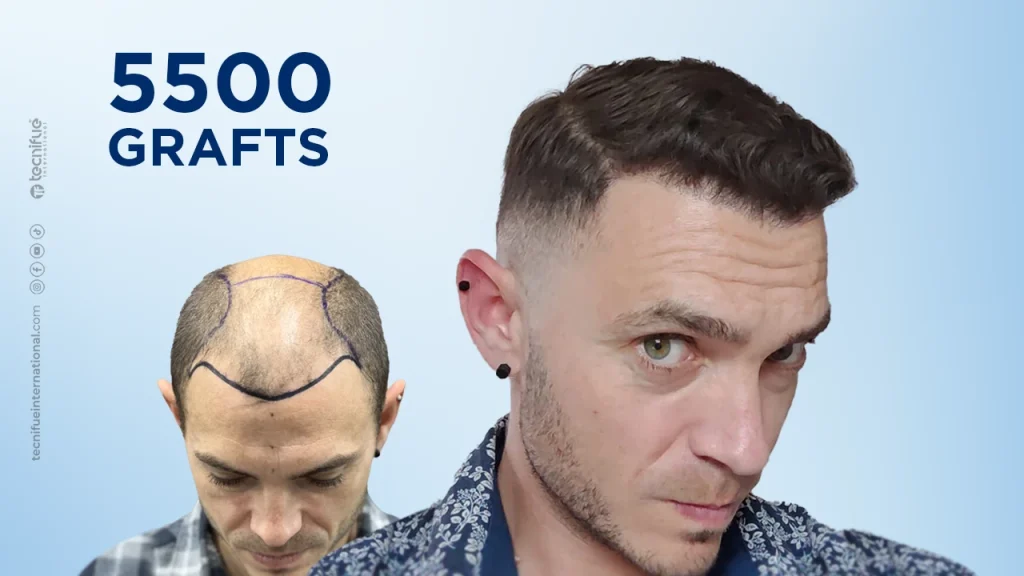
Background: Patient Richard
When Richard contacted us, he was already in one of the most advanced stages of hair loss.
His hair loss had progressed gradually over 12 years, starting in his mid-twenties.
He wasn’t even sure whether he would be eligible for a hair transplant due to the extent of his hair loss.
However, Richard had a few factors working in his favor.
The first was the quality of his donor area, which was excellent.
The second factor was the relatively small surface area that needed treatment.
Let me explain: Richard had what we call a “small head” in hair restoration, which means that even though his hair loss was extensive, the actual area needing grafts was smaller than average.
Usually, we would plan a case like Richard’s in two sessions.
However, based on our previous experiences and Richard’s favorable circumstances, we decided to go for a complete restoration in a single session.
We achieved a complete restoration with 5,500 grafts, completely transforming Richard’s appearance.
The difference is truly day and night.
Richard’s transformation is a testament to what can be achieved with careful planning and execution, even in advanced hair loss cases.
Hair Transplant Method: FUE Sapphire
Number of Grafts: 5,500 Grafts
Hair Transplant Before and After Case 8

Background: Patient Peter
Peter had been suffering from hair loss for over 15 years, starting in his early twenties.
His hair loss was well advanced when he contacted us for hair restoration options.
His frontal zone was completely bald, while the crown area still had hair but was very weak.
Despite the advanced stage of hair loss, the density of Peter’s remaining hair was good, and we believed that a combination treatment would be the best solution for him.
Let me explain what this involves.
A combination treatment means performing hair restoration in the zones where the hair is completely lost.
We use professional hair growth products instead of transplanting new hair for areas where the existing hair is weak but still present.
This approach aims to restore lost hair while strengthening and saving the remaining hair.
This strategy worked out perfectly for Peter.
We managed to restore his lost hair and significantly improve the health and strength of his existing hair.
The big advantage was that we were able to achieve these results in a single session.
Hair Transplant Method: FUE Sapphire
Number of Grafts: 5,000 Grafts
Using the FUE Sapphire method, we placed 5,000 grafts in the areas where Peter had permanently lost his hair.
Meanwhile, professional hair growth products help to strengthen and improve the remaining hair in the crown area.
Peter’s case is an excellent example of how a combination treatment can provide comprehensive results, restoring hair in bald areas while also enhancing the quality of the existing hair.
Hair Transplant Before and After Case 9
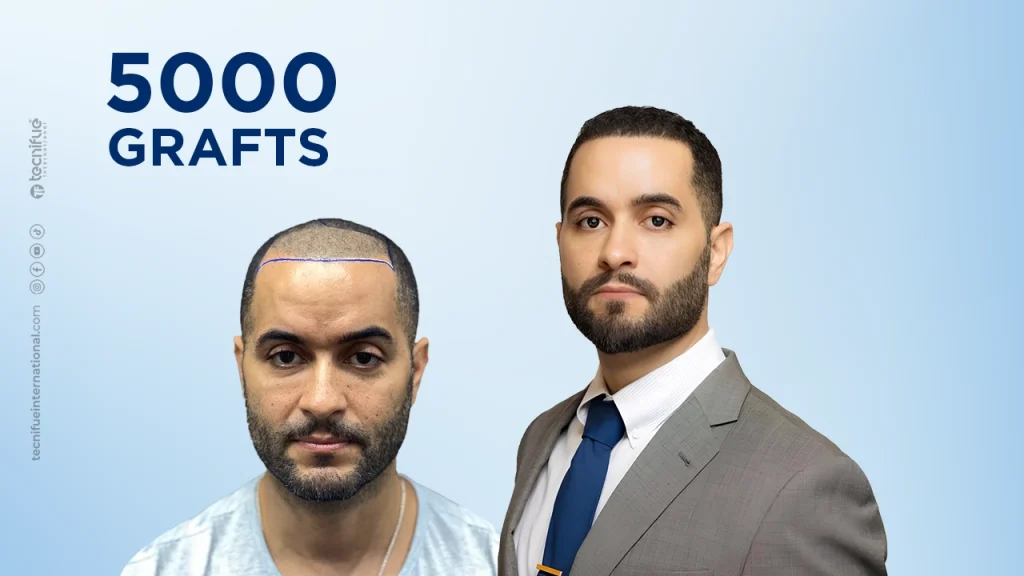
Background: Patient Fabiano
When Fabiano reached out to us, he was quite unhappy with his situation.
His hair loss started in his early thirties, and he tried scalp micro pigmentation (SMP) as a solution.
However, as you can see from the before pictures, the SMP didn’t look very good and didn’t meet his expectations.
Additionally, his mid scalp and crown area were showing signs of thinning.
We decided to take a comprehensive approach to restore Jorge’s hair.
We focused on fully restoring the frontal zone and also densifying the mid-scalp and crown area.
Fabiano had a strong donor area, which gave us the confidence to perform the procedure in a single session.
We managed to implant 5,000 grafts, resulting in a complete restoration of his hair.
Fabiano’s transformation highlights the effectiveness of a well-planned hair transplant, especially in correcting previous attempts like SMP.
Hair Transplant Method: DHI
Number of Grafts: 5,000 Grafts
Let’s move on to our final case!
Hair Transplant Before and After Case 10
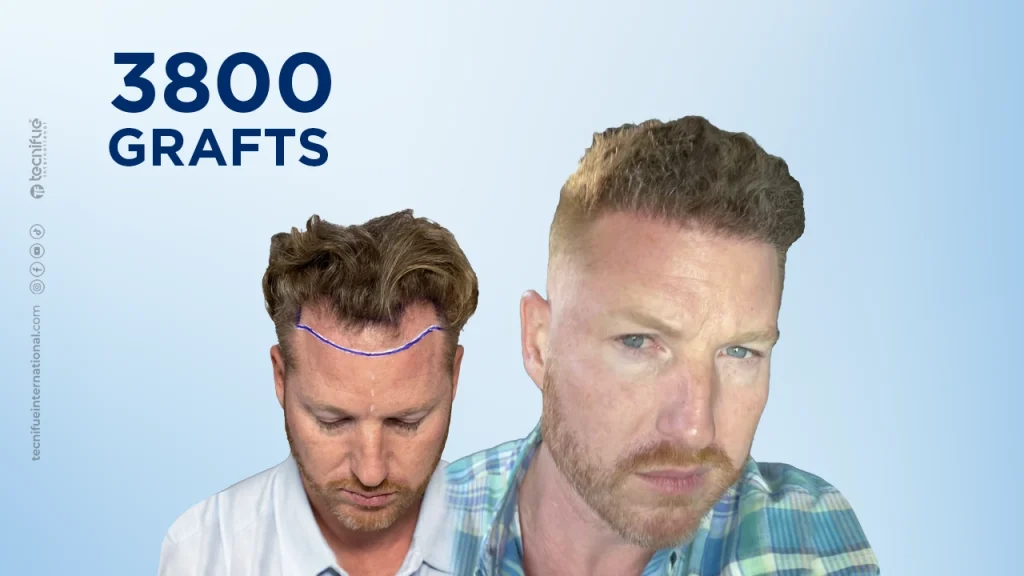
Background: Patient Saun
Saun had been dealing with a gradually receding hairline for the last eight years when he contacted us.
Saun has always had a bit of a big forehead, so his case required both hair restoration and aesthetic correction of the hairline.
Saun’s overall hair quality was very good and dense, which was a significant advantage.
To achieve a homogeneous look between the transplanted and existing hair, it was critical to ensure high density in the hair restoration process.
We implanted 3,800 grafts in a relatively small area to match the density of his existing hair.
And that’s exactly what we managed to achieve for Saun.
The result is a natural-looking hairline that blends seamlessly with his dense existing hair, providing a balanced and aesthetically pleasing appearance.
Hair Transplant Method: DHI
Number of Grafts: 3,800 Grafts
We carefully placed 3,800 grafts using the DHI method to ensure high density and a natural look.
This technique allowed for the precise placement of each graft, ensuring a perfect match with Saun’s existing hair.
Saun’s case demonstrates how critical it is to consider hair transplants’ aesthetic and restorative aspects.
By achieving a high-density hairline that blends seamlessly with his existing hair, we provided Saun with a result that restored his hair and enhanced his overall appearance.
5 Before and After Picks by James
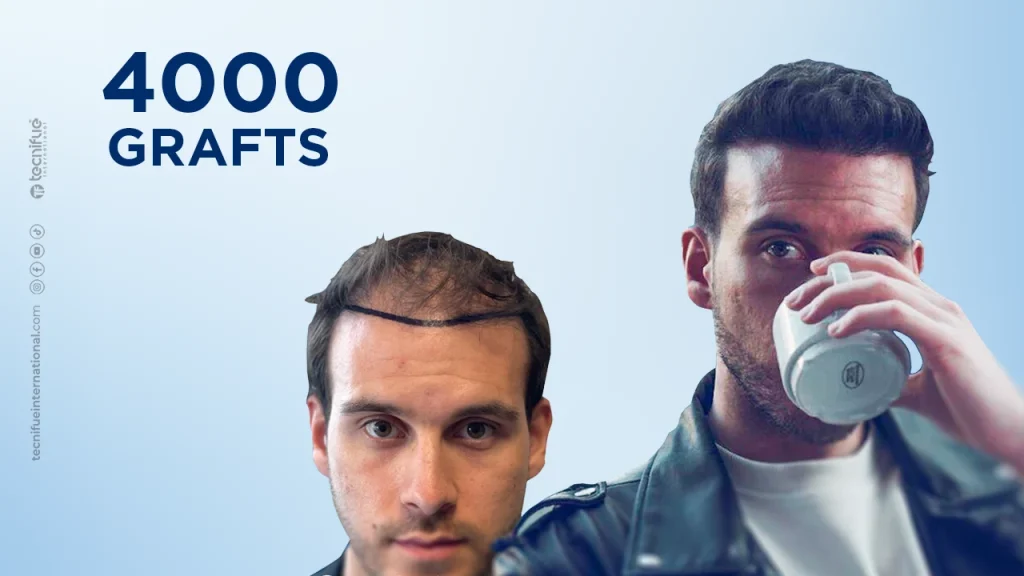

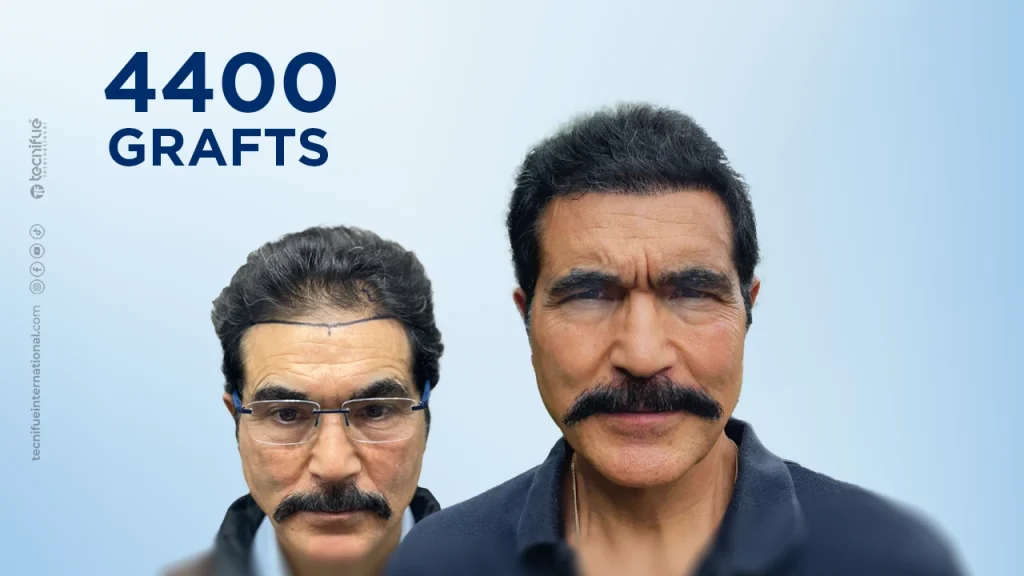
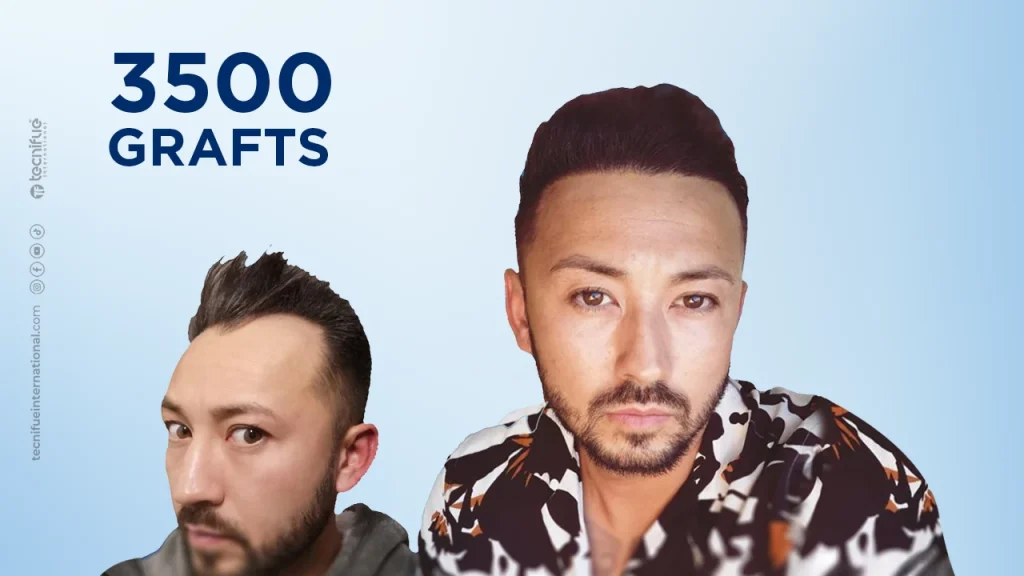
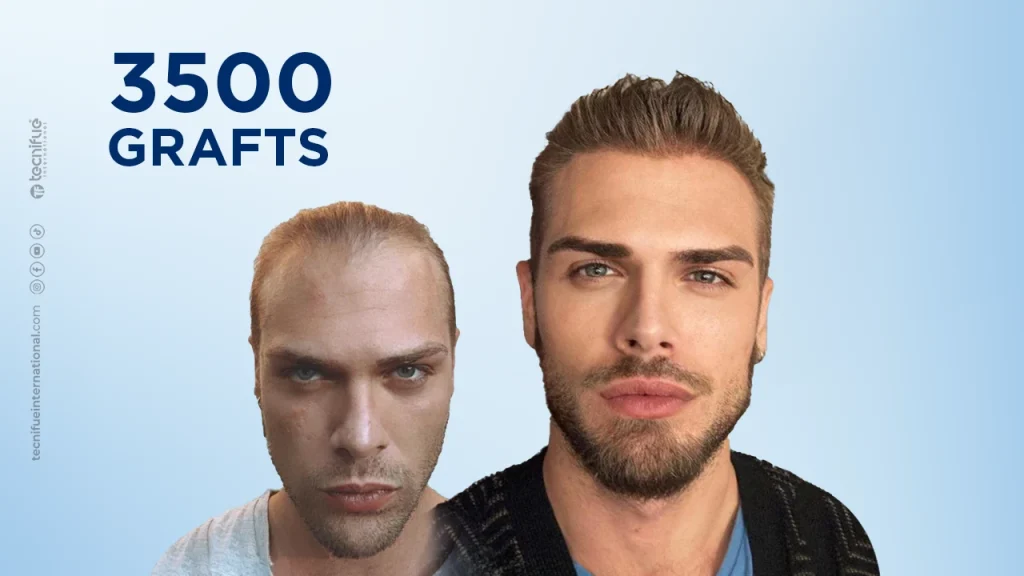
The cases I have shown above, and their backgrounds should give you a good idea of the possible hair transplant results.
Each case is unique and has its own story.
If you are suffering from hair loss, I’m sure you also have your own unique story.
In the introduction, I promised to provide insights that will help you understand more about the before and after of a hair transplant beyond the obvious.
Now, let’s delve into the next topic related to the importance of hairline design and what you need to know about it.
Let’s continue.
Importance of Hairline Design
It might not come as a surprise, but hairline design is arguably the most important aesthetic aspect of a hair transplant procedure.
This makes sense since it is the most noticeable detail of a hair transplant.
Hairline design might seem like a simple task, but it’s not!
I know this from my own experience in helping patients.
Here’s the thing: finding a balance between symmetry and aesthetics is critical.
In other words, the hairline needs to be symmetrical to an extent but also fit naturally with the face.
This is where the challenge lies.
From the thousands of hairlines I’ve helped design with our medical team, I’ve learned that each hairline is unique and that 100% symmetry is unrealistic.
Asymmetries in a hairline are normal
Every individual’s face has natural asymmetries.
Striving for perfect symmetry almost always results in an unnatural look.
In the early years of our clinic, I often argued with our medical team about this.
They focused on creating technical symmetry, while I approached hairline design more holistically, considering the hairline as part of the entire face.
Eventually, they understood that this holistic view was essential.
As I gained experience in hairline design, I realized the cause of our differing perspectives.
When drawing a hairline, you’re very close to the patient and can’t see the overall picture.
However, standing a few feet away allows you to see the whole picture.
The process starts with understanding the patient’s facial characteristics in detail.
Minor Adjustments in hairline design can have a significant impact
Sometimes, a few millimeters of adjustment can significantly improve the hairline.
Yes, it is all about the details.
Training the eye to see these details becomes a skill over time.
I am generally a modest person, but not regarding hairline design.
I believe that I have one of the best-trained eyes in the world for spotting and designing hairlines.
To sum it up, hairline design is critical in hair restoration.
It starts with symmetry but goes much further by including the patient’s unique facial characteristics.
An expert’s trained eye makes a new hairline great.
Unnatural Hair line Designs
I’ve presented a few hairlines below, which I consider unnatural.
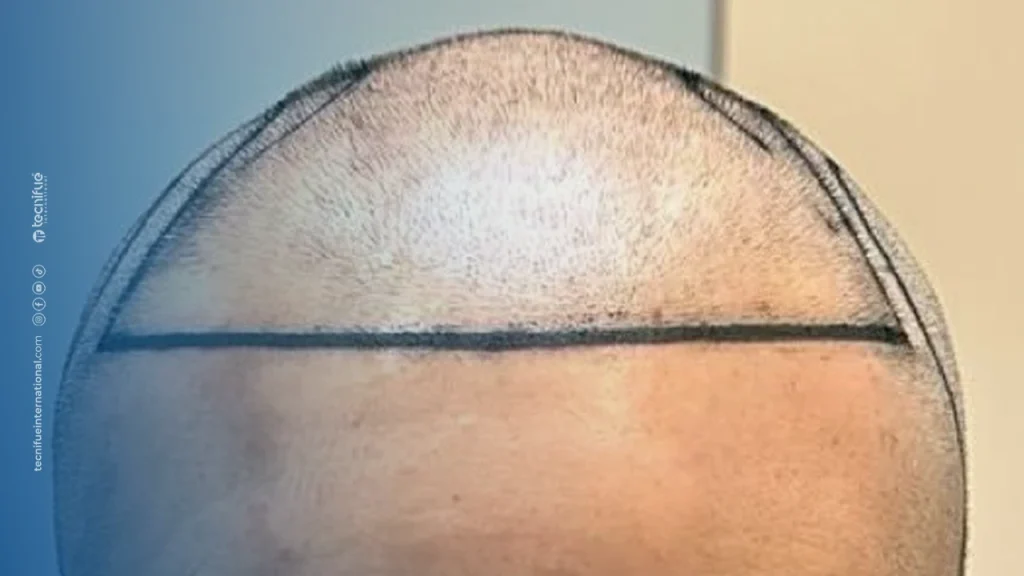
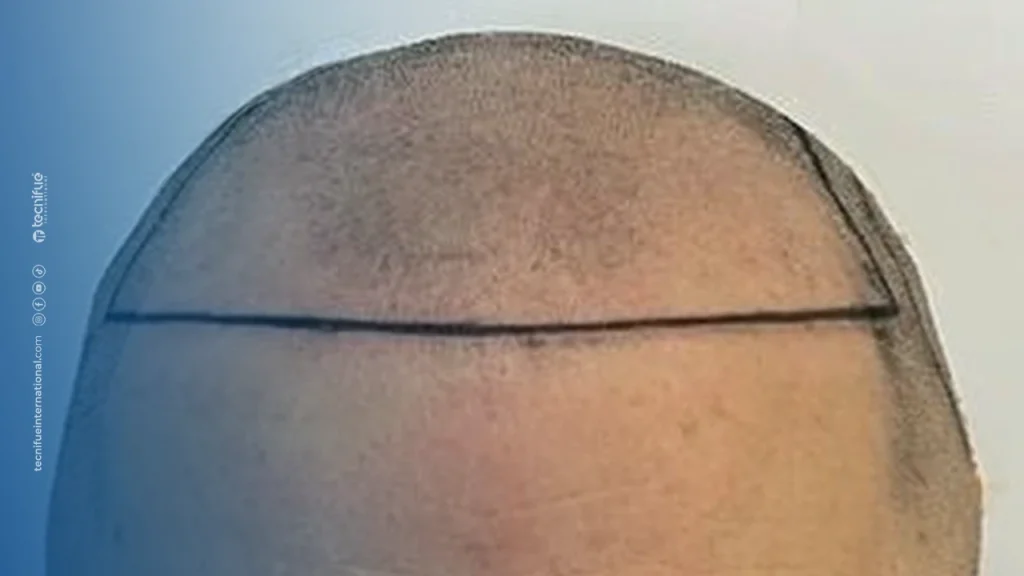
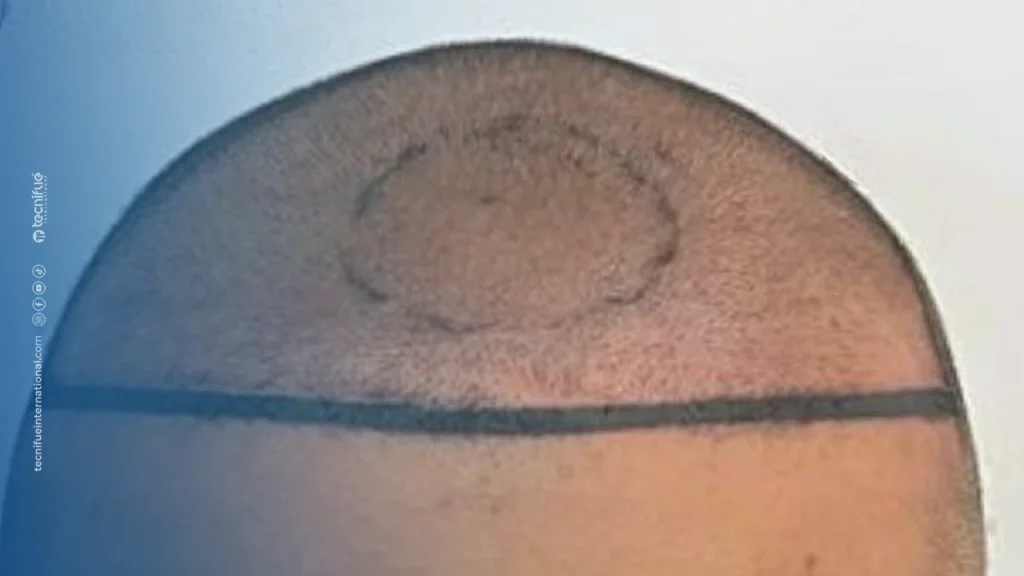
I’ve selected three hairline designs that I consider unnatural from a well-known clinic in Istanbul.
Let’s analyze together what’s wrong with these hairlines.
Let me clarify one thing first.
The hairlines are from three different individuals.
What’s the first thing that stands out to you?
All the hairlines are very straight.
This is problematic for two main reasons.
First, these hairlines are not tailored to the unique facial structures of the patients.
All three patients have almost identical hairlines.
If you saw them side by side, you might think they were from the same clan or something.
Sorry for the bad joke, but you get my point.
Having identical hairlines is unacceptable from a professional standpoint.
The second issue is that these hairlines don’t look natural.
Such straight hairlines make it obvious that a hair restoration is performed.
We want to avoid this because a high-quality hair transplant should not be obvious.
The goal is to achieve a natural look that blends seamlessly with the patient’s existing hair and facial features.
Unnatural hairlines can appear in various ways, but I chose these examples because they clearly illustrate the point.
Identical, straight hairlines fail to consider individual differences, resulting in an artificial appearance.
So, what is a natural hairline design?
Let me show you.
Natural Hair Line Designs
And here are a few more natural hairlines.
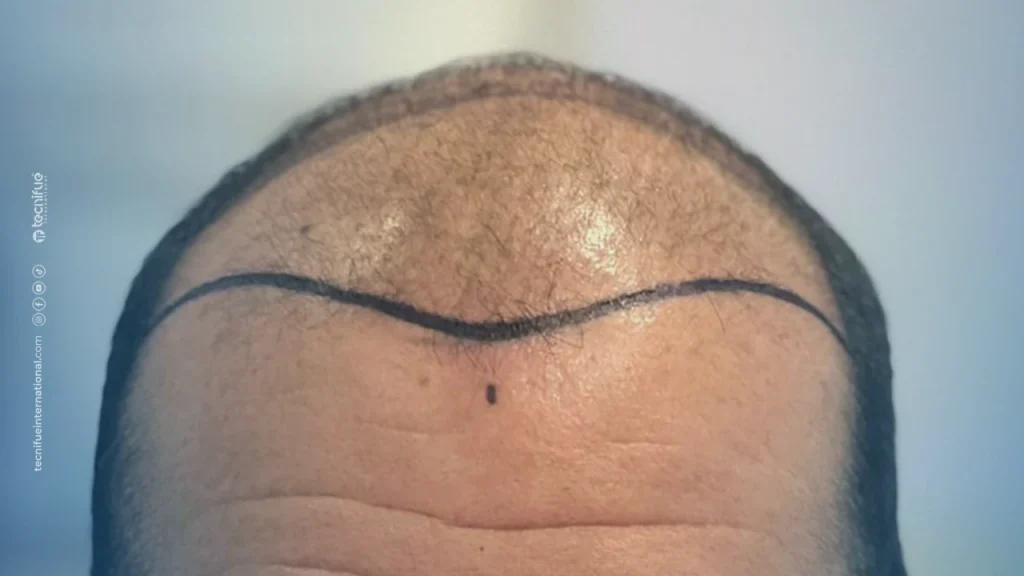
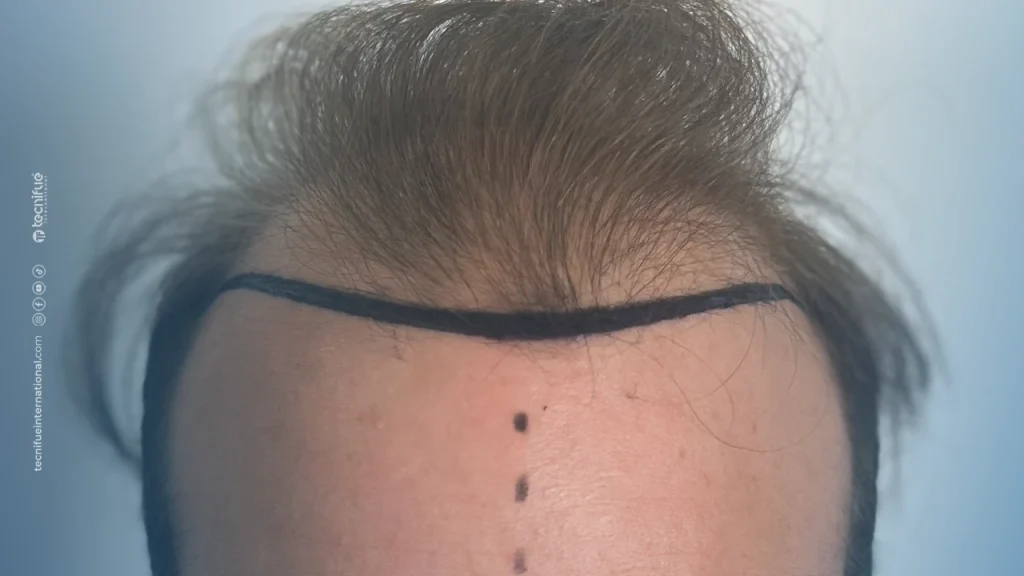
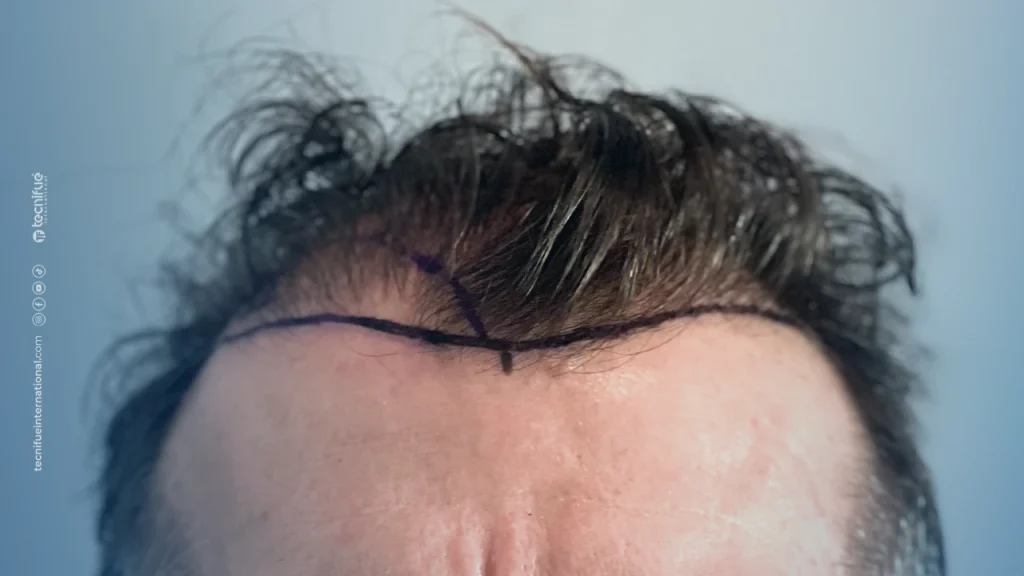
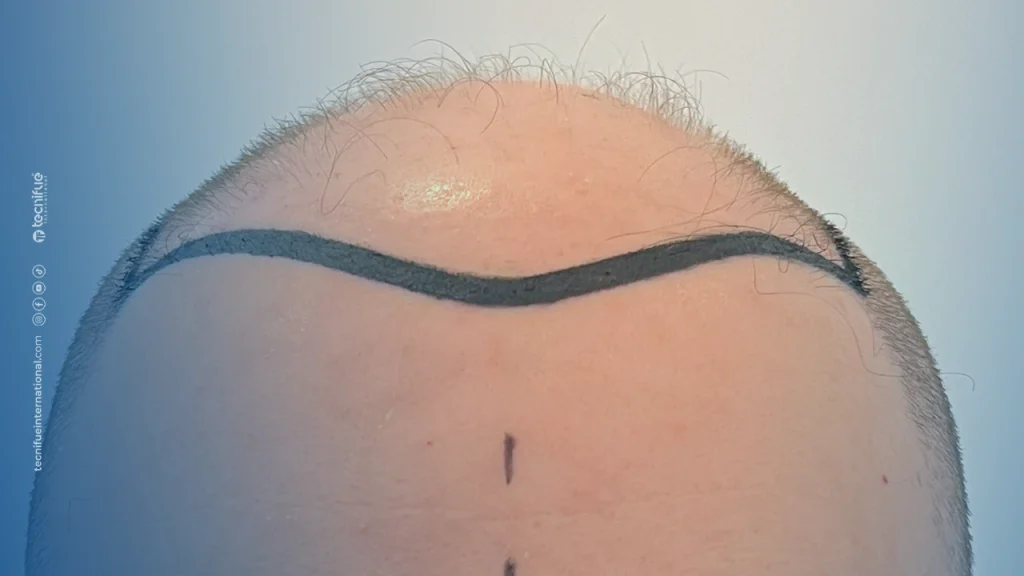
These hairlines belong to four patients who had hair transplants at our clinic in Istanbul.
If you study the hairlines, you will see clearly that each is unique.
They are tailored to the facial characteristics of each patient.
There’s no one-size-fits-all approach here, as standard work for everyone is a definite no-go.
Sometimes, a patient might insist on a very straight hairline.
We take the time to explain in detail why it won’t look natural.
In many cases, we find a mid-way solution, and patients often thank us once they see the final results.
One final note: age should be considered when designing a hairline, especially for patients in their early twenties.
At this age, facial structures, including hairlines, can change as they mature.
It’s important to anticipate these potential changes so the patient will still enjoy a natural hairline in a decade.
I think we covered enough about hairline design to make you understand the importance of good hairline design.
Let’s get to our next topic.
What makes a hair transplant before and after results good?
That’s precisely what I’ll cover in our next topic.
What Makes a Hair Transplant Result Good?
This is a question I get asked often as an expert, and I think most of us know the answer.
A good hair transplant, from a technical perspective, is one that looks natural.
You can refer to the case studies above to see examples of what a good hair transplant looks like.
The untrained eye should be unable to tell that a hair transplant has been performed.
In other words, when you tell people you’ve had a hair transplant, the reaction you want to hear is, “Really? Wow, that looks so natural.”
This is the best way to determine whether a hair transplant result is good.
To sum it up, a good hair transplant should look natural, and non-experts should not be able to tell that you’ve had the procedure done.
I mention non-experts for a reason.
As an expert, I can almost always spot a hair restoration because of my trained eye.
Here’s something you might find amusing: the first thing I look at when I meet a new person is their hair.
I’m programmed that way after so many years of dealing with hair.
Now that you know what makes a good hair transplant, I believe it’s also valuable to discuss what makes a bad hair transplant result.
Let’s move on to that next.
What Makes a Bad Hair Transplant Result?
A bad hair transplant result looks unnatural, and where it’s obvious that a hair transplant has been performed.
That said, there is a subjective aspect to consider here.
As an expert, I might deem a hair transplant result bad, but the patient might be pretty happy with the outcome.
In such cases, I don’t think we should consider the outcome entirely failed.
I view it from the perspective of technical expertise.
I’ve seen many hair transplant results that were mediocre from my standpoint, but the person who had the transplant looked very happy.
Who am I to judge in this case?
Good for them, and I mean this sincerely.
I just think it could have been better.
However, some lousy hair transplants stand out, even to the untrained eye.
This is especially true for hair transplants with older, more conventional techniques.
You will notice that the hair looks like plugs, appears fake, and has unnatural growth directions compared to the surrounding hair.
Everyone can see that a bad hair transplant has been performed.
I’ve shared a few bad hair transplant examples below to help you visualize what I mean.
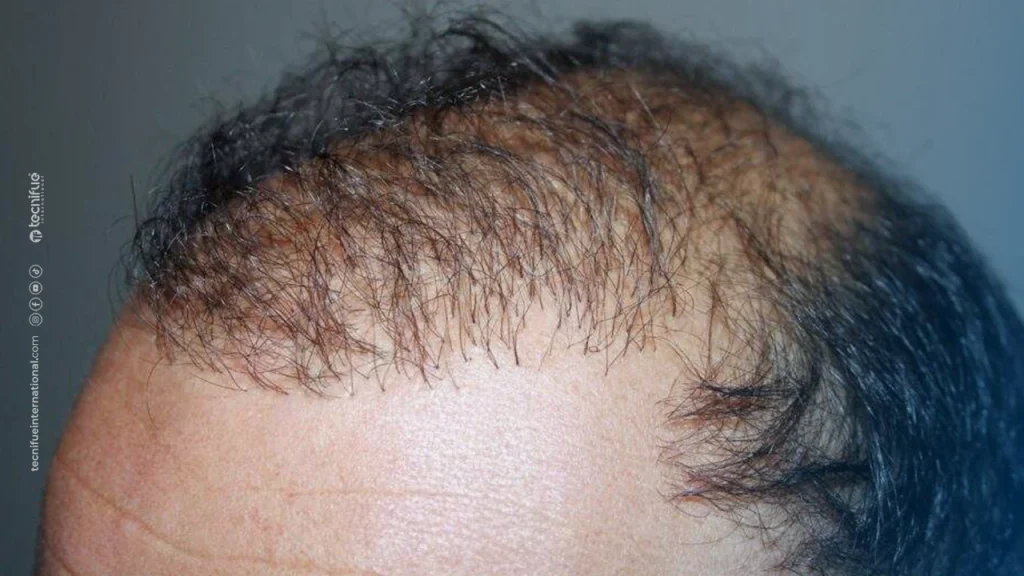
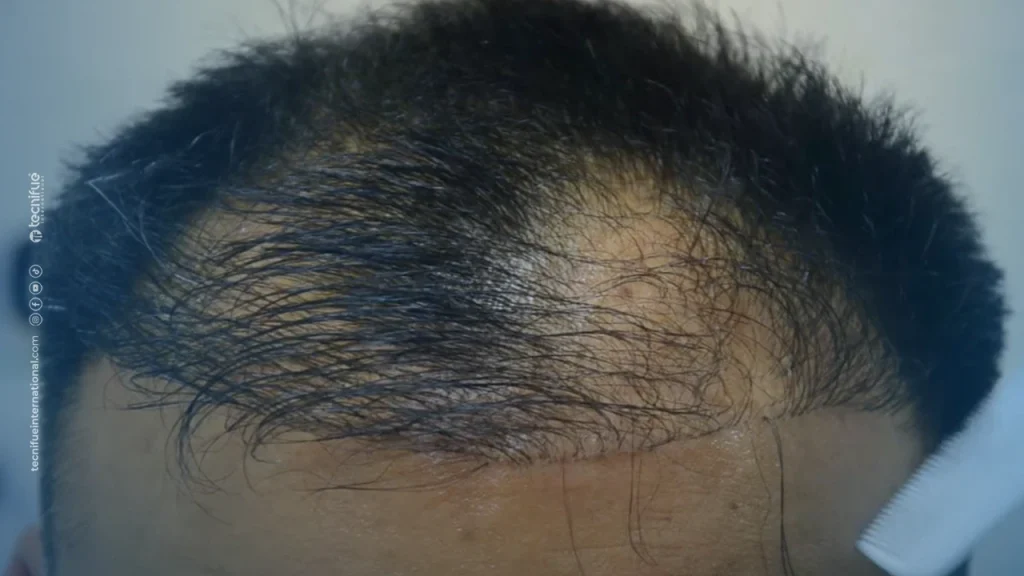

Let’s continue with our next topic, which is why a high number of grafts matters in hair transplantation.
Why Does a High Number of Grafts Matter for a Natural Hair Transplant Result?
Let me explain the correlation that highlights why a high number of grafts is essential for a natural hair transplant result.
A high number of grafts means the medical team can implant more per square centimeter.
More grafts mean more hairs growing, which means higher hair density.
High-density hair is a positive characteristic of healthy hair.
Therefore, implanting a high number of grafts per square centimeter is critical.
Think about it: hair that lacks density looks less healthy, wouldn’t you agree?
It could even indicate hair loss.
In hair restoration, we prefer to allocate many grafts to achieve the most natural-looking results.
We have two more topics to cover before I share my final thoughts.
Let’s continue with why a smart graft allocation plan is critical for a natural-looking result.
Why is a Smart Graft Allocation Plan Critical for a Natural-Looking Result?
If you are new to the topic, let me quickly explain what I mean by a graft allocation plan.
A graft allocation plan is a part of the hair surgery treatment, and it determines how many grafts will be implanted in each treatment zone.
To clarify, suppose you have a receding hairline and a thinning crown.
You need 3,000 grafts for the frontal zone and 1,000 grafts for the thinning crown.
The graft allocation plan would state that 3,000 grafts will be placed in the frontal zone and 1,000 grafts in the crown area.
Now that we have clarified a graft allocation plan let me explain why it’s important for a natural result.
We need to look at the subject from two perspectives, each representing a different patient requiring hair restoration.
The first patient has a severe hair loss profile and would require 6,000 grafts, but the donor zone only allows 5,000 grafts extraction.
We are 1,000 grafts short.
By strategically implanting the grafts, we can still cover the entire area that needs restoration.
This strategic placement ensures a natural result and full coverage despite fewer grafts.
Now, let’s imagine a second patient who only has a receding hairline and needs 3,000 grafts.
The patient’s existing hair has a very high density of, let’s say, 80 grafts per cm².
It’s critical to match this density for a natural result.
If this isn’t done correctly, the front hairline will look thinner than the original hair.
This discrepancy in hair density can make the hairline appear unnaturally thin or uneven.
There are more technical dynamics to consider, but if you understand what I have shared so far, your knowledge is sufficient.
Now, let’s move on to our last topic, where I will share some expert tips for achieving the most natural hair transplant before and after results.
Expert Tips for a Natural Hair Transplant Result
The tips I’m about to share are tips that I use to help our patients and that I considered for my hairline.
Ready to find out what they are?
Let’s dive in.
Carefully Study the Hairlines of Other People
My first tip is to study the hairlines of other people carefully.
You will be surprised by how unique hairlines are and how many variations exist.
Once you’ve observed this, try to see how the hairlines fit with the shape of the front head.
Finally, notice how the hairline integrates with the overall face.
Try to categorize the different types of hairlines you see.
For example, do you notice similar patterns among certain groups of people?
By doing this consistently, you will train your eyes to evaluate hairlines.
We want you to reach a point where you can spot natural hairlines effortlessly.
This trained eye will be invaluable when deciding on your new hairline.
Look at Hairlines and Hair Profiles in Your Family
Hair loss can indeed have a hereditary cause, but hair types and hairlines can also be similar among family members.
Therefore, look closely at the hairlines of family members who look similar to yours.
If they haven’t suffered from hair loss yet, you have a valuable reference for what your new hairline could look like.
Study Your Hairline Pictures Before Hair Loss
When studying your hairline, I’m not referring to pictures from when you were 16 or 17.
Instead, look at photos from your early twenties.
These pictures often provide a good idea of your original hairline and what the most natural hairline should be.
Have a Trial Drawing Session
I did this myself and highly recommend it to anyone considering a hair transplant:
Have a trial drawing session, preferably with an expert.
Take a few pictures of your hairline from different angles and keep reviewing them to determine how you feel about the drawn hairline.
This process will give you time to determine whether you’ve found the hairline that best suits you before it becomes your permanent new hairline.
These are my last expert tips for you.
There are more tips, but they are highly technical and challenging to implement without professional guidance.
So, we’ve covered lots of important information in this guide.
Let me wrap up with my final word.
Final Word
If you’re new to my work, I highly recommend reading more of my blogs on hair restoration.
You’ll find that I offer valuable and unique insights to make the hair restoration sector more transparent by providing clear and accurate information.
This transparency benefits both patients and clinics in the long run and will gradually help eliminate underperforming hair transplant clinics.
Returning to our topic on hair transplant before and after results, I want to share a few comments and summarize.
If you’ve read this blog in detail, you should now understand that the before and after results are the outcome of many related dynamics.
When all steps are done correctly, you have a high chance of enjoying great hair transplant results.
However, if not done correctly, you will carry the consequences for the rest of your life.
So, make sure to do your research.
I understand that you want to get your hair back as soon as possible, and I wish we lived in a world where all clinics operated at the same level of quality and expertise.
Unfortunately, that’s not the case.
Many clinics still use outdated treatment protocols and methods.
I suggest tempering your enthusiasm for a moment and doing your research.
Dive deep; once you’ve done your homework, go for it.
A hair restoration is definitely a life-changing experience.
I know this from my own hair transplant experience.
Thank you for your time, and I sincerely wish you success on your hair restoration journey.
Get Your Hair Transplant Consultation
The beginning of your hair restoration journey starts with a hair transplant consultation.
As one of Turkey’s preferred hair transplant clinics in Istanbul, we offer complimentary consultations to international patients.
Having one of our senior Medical Consultants support you makes the journey much more comfortable.
We will inform you about your hair transplant options and allow you to ask any hair restoration-related questions.
Good research is truly the key to successful hair transplant outcomes. Contact us to get our professional support and start your journey today.
